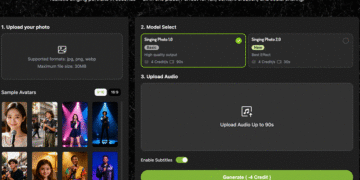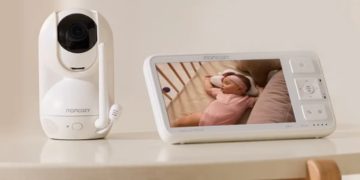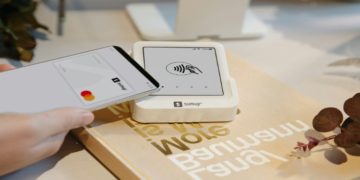Introduction
If you’ve ever tiptoed into a dark nursery just to make sure your baby is still breathing, you’ll understand why baby monitors are such a comfort. They started out decades ago as simple little audio gadgets—static-filled and barely reliable—but today? They’re more like mini command centers for parents. You can see your baby, hear every tiny sigh, track the room temperature, and even get an alert when they stir in their sleep.
And parents love it. The past decade has seen this market climb steadily, fueled by busier lifestyles, smaller living spaces, and frankly, the fact that technology now makes this level of connection possible. Understanding where the market’s been, where it’s headed, and what features actually matter can make the difference between buying a flashy gadget and getting a real parenting tool.
Market Overview & Size
The numbers tell a clear story— a baby monitor isn’t just a passing parenting fad. In 2024, the global market was worth about USD 1.4 billion. By 2034, it’s expected to reach nearly USD 2.5 billion, with annual growth rates hovering around 6%.
Different analysts come up with slightly different figures, but they all point in the same direction: up. One report sees it hitting USD 3.1 billion by 2034, while another projects USD 2.62 billion by 2033. Either way, it’s not slowing down anytime soon.
Sub-Segment Performance
Smart Baby Monitors
These connect to Wi-Fi, stream video to your phone, and often link up with smart home systems. Right now, they’re worth about USD 1.4 billion—and they’re on track to almost triple within the next decade.
Wearable Smart Baby Monitors
Think ankle bands or clip-on sensors that keep tabs on heart rate and oxygen levels. They’re already a multi-billion-dollar niche and growing steadily.
Interactive Baby Monitors
The fastest-rising group. Two-way audio, remote-controlled cameras, and built-in lullabies make these more than just “watching devices”—they’re parenting companions.
Growth Drivers
- Working parents want to feel connected even when they’re at the office or in another part of the house.
- Urbanization means smaller living spaces and a higher demand for tech-based parenting aids.
- Tech innovation is rolling out features like motion tracking, breathing analysis, and AI-based cry detection.
- Brand investment in R&D keeps products fresh and features relevant.
Regional Landscape
- North America still leads, thanks to high incomes and early tech adoption.
- Asia Pacific is catching up fast, fueled by growing middle-class families who are more safety-conscious.
- Europe is seeing steady uptake, especially in premium models.
- Latin America is on the rise as connectivity improves.
V. Emerging Trends & Tech Features
- App integration is quickly replacing stand-alone monitors.
- Video-first devices dominate—parents want to see, not just hear.
- AI features like sleep tracking and developmental alerts are becoming standard.
- Portable wearables make health tracking easier for busy, mobile families.
Comparison Table: Types of Baby Monitors
| Monitor Type | Key Features | Pros | Cons |
| Audio-Only | Sound only | Cheap, simple | No visuals |
| Video Monitors | HD video, night vision | Visual reassurance | Higher cost |
| Smart Monitors | App-based, AI alerts | Remote access | Privacy concerns |
| Wearable Monitors | Tracks vitals | Constant updates | Can be pricey |
| Interactive Models | Two-way talk, lullabies | Engaging | Expensive |
Challenges & Risks
- Data privacy is a concern—Wi-Fi models can be vulnerable if not secured.
- No universal safety standards mean quality varies widely.
- Price barriers still keep some of the best features out of reach for many families.
A Quick History Lesson
Back in 1938, the first baby monitor hit the market. The Zenith Radio Nurse was clunky and audio-only, but it was revolutionary at the time. Fast forward to today and monitors have evolved into sleek, high-definition, AI-powered systems.
Choosing the Right Monitor
Picking a monitor isn’t about buying the fanciest gadget—it’s about choosing something that actually works for your family.
Take the Momcozy 5-Inch Dual-mode Smart Baby Monitor-BM04. It gives you a clear, stable video feed, works without feeling overly complicated, and doesn’t flood you with unnecessary alerts. It’s the kind of balance that makes parenting feel a little less stressful and a lot more manageable.
Things to keep in mind before buying:
- Does it connect smoothly to your home network?
- Is the video/audio quality reliable?
- Are the extra features actually helpful—or just there for show?
- How easy is it to set up and use?
Conclusion & Looking Ahead
The baby monitor market is in full bloom, powered by technology that’s getting smarter and parents who want to stay close without hovering 24/7. Over the next decade, expect monitors to get even more personalized, more secure, and maybe even more predictive about your baby’s needs.
But no matter how advanced they get, their purpose won’t change: giving parents peace of mind. And honestly, that’s something you can’t put a price on.
David Prior
David Prior is the editor of Today News, responsible for the overall editorial strategy. He is an NCTJ-qualified journalist with over 20 years’ experience, and is also editor of the award-winning hyperlocal news title Altrincham Today. His LinkedIn profile is here.












































































